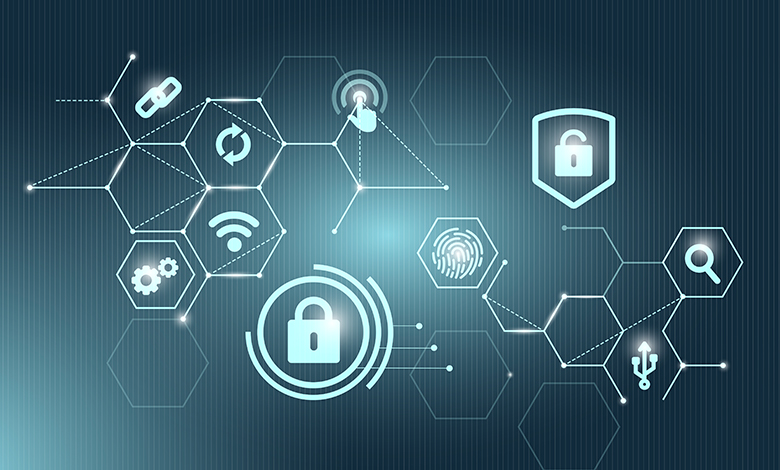
On 17 November 2019, the first case of Covid-19 was identified in Wuhan, China. The World Health Organisation (WHO) declared a pandemic on 12 March 2020. The coronavirus was named SARS-CoV-2 and the illness was named COVID-19. Thus far it has affected a population of more than 13 million people and caused more than half a million deaths worldwide! As we all know by now, the common symptoms are fever, dry cough, and tiredness. The less common symptoms are sore throat, diarrhea, headache, aches and pains, loss of taste or smell, conjunctivitis, and rash. The severe symptoms are difficulty breathing or shortness of breath, chest pain or pressure, and neurologic deficits.
Artificial intelligence has accelerated the progress of research! 1n the search for a Covid-19 vaccine, frontiers in AI used artificial intelligence to help researchers screen and identify information for the development of possible vaccines and to advance aspirants for vaccines to the final phases of testing in humans. What is the difference between artificial intelligence, machine learning, and deep learning? Machine learning uses algorithms to pass data, learn from that data, and to make informed decisions based on what it has learned. Machine learning computational analyses and algorithms have played a fundamental role in the design of a Covid-19 vaccine. The Human Immunomics initiative developed AI tools to speed the discovery of a Covid-19 vaccine. Deep learning is a ‘human-like’ artificial intelligence. The most important difference between the two is how data is presented. With machine learning, less data is required to train the algorithm than with deep learning. Will deep learning make other machine learning obsolete? Work is already in progress to integrate such knowledge into neural network models, but it is definitely not sufficient yet to completely replace all other models and algorithms. However, advanced AI such as deep learning has demonstrated high effectiveness in novel drug discovery, vaccine, and antibody development for Covid-19. This progress was vital to improve the current pandemic and immediate SARS-COV-2 therapy discovery. The role of AI in vaccine design is to study the proteins that make up the virus. Due to deep learning, AI has a bright future!
At the beginning of the Covid-19 pandemic, Italy used an experimental chest X-ray scoring system to calculate and alter Covid-19 progression. The actual role of AI is to identify Covid-19 and decrease the time to diagnosis; most importantly, to help radiology detect Covid-19 pneumonia and to provide the best care for patients affected by the virus. The chest CT severity score is an imaging AI tool to assess the clinical severity of Covid-19 pneumonia and to identify critical cases by providing lung burden analytics; thus, helping triage to improve patient care. By tracking the risk of complications, it reads the percentage of lung burden as well as the progression over time.
The SARS-CoV-2 (virus) and the Covid-19 (illness) has caused a global unprecedented situation and brought life to an alarming halt – claiming thousands of lives! Accordingly, it has motivated the scientific community in the fields of genetic and genomic sciences, clinical data science, and bioinformatics to combat the situation. The frantic hunt for a Covid-19 vaccine has expanded throughout the world as there were no available novel antiviral agents or approved vaccines to use as a frontline defense. –
Minuscule examples of involved companies and professionals are: in the United States of America – research scientists at the University of California and Clinical Innovation (Clinical Data Science) at the Mount Sinai Hospital in New York. In Japan – the Institute of Medical Science at the Research Hospital of the University of Tokyo.
Let’s look at a few questions, definitions, and solutions. When Pfizer and Moderna announced promising results from their Covid-19 vaccine trials, more than a few countries showed an interest in distributing safe, effective vaccines. According to new data, researchers report that immunity against the coronavirus may last for years. Blood samples from patients who have recovered from Covid-19 report a strong immune response. The Cold Spring Harbor Laboratory in New York revealed in a preprint that immunologic memory to SARS-CoV-2 is considered to last longer than 6 months after infection. Note that a preprint has not been certified by peer review.
Vaccine development continues to be one of the most testing areas of drug development. The Covid-19 vaccine is different from other vaccines because it does not contain active and diluted ingredients of the SARS-CoV-2 virus. Instead, the gene RNA has been altered to include a ‘messenger’ (mRNA) to smother the coronavirus so that it cannot attach itself to healthy human cells. The objective is to de-activate the spiked outer protein layer of the virus. A vaccine is a form of gene therapy to ‘stunt’ the virus! The Pfizer-BioNTech COVID-19 vaccine relies on a temperature-controlled environment known as the cold chain. Globally, hackers have launched a phishing campaign to target the vaccine supply chain. They concentrate on organizations connected to the Gavi Alliance’s ‘Cold Chain Equipment Optimisation Platform’ (CCEOP) – from therapy research and healthcare delivery to the distribution of vaccines. The GAVI or Gavi Vaccine Alliance is a public-private global health partnership that concentrates on poor countries; their goal is to increase access to immunization in these countries. Gavi’s headquarters are in Geneva, Switzerland. IBM X-Force Threat Intelligence reports that the professional services sector, schools, universities, and academic institutions are attractive targets for hackers. IBM’s research team disclosed highly targeted phishing operations and revealed who is likely behind the attacks.
Why are Covid-19 vaccines in danger? According to Wikipedia, cybersecurity (better known as information technology security) is the protection of computer systems and networks from the theft of or damage to their electronic data, software, or hardware, as well as from the disturbance or misdirection of the services they provide. During the past year (since the outbreak of the pandemic) entire populations have adapted to a virtual modus operandi. This includes hackers; they have an advanced ‘hit rate’ due to lockdowns requiring a vast increase in online data and transactions. Countries that want to spy on each other making use of individuals to act illegally. Everybody is subject to hackers’ illegal operations – even governments! It is certainly not my desire to expand on how it’s done. Instead, my purpose with this article is to concentrate on the Covid-19 vaccine and cybersecurity. The second definition of Wikipedia is the definition of an ‘act of terrorism’. To accomplish ideological or political gains (by way of threat or intimidation) cyber terrorism is the use of the internet to carry out violent acts that threaten or result in loss of life or substantial bodily harm. Terrorist activities which include acts of large-scale and intentional disturbance of computer networks are sometimes deemed as an act of internet terrorism; particularly in the case of personal computers attached to the internet by way of tools such as malicious software and hardware methods and programming scripts, computer worms, computer viruses, and phishing.
Cyber terrorism is a divisive term. Some people select a constricted definition that relates to exploitation by known terrorist organizations (of intrusion attacks against information systems) for the mere purpose of creating alarm, panic, or physical
On 17 November 2019, the first case of Covid-19 was identified in Wuhan, China. The World Health Organisation (WHO) declared a pandemic on 12 March 2020. The coronavirus was named SARS-CoV-2 and the illness was named COVID-19. Thus far it has affected a population of more than 13 million people and caused more than half a million deaths worldwide! As we all know by now, the common symptoms are fever, dry cough, and tiredness. The less common symptoms are sore throat, diarrhea, headache, aches and pains, loss of taste or smell, conjunctivitis, and rash. The severe symptoms are difficulty breathing or shortness of breath, chest pain or pressure, and neurologic deficits.
Artificial intelligence has accelerated the progress of research! 1n the search for a Covid-19 vaccine, frontiers in AI used artificial intelligence to help researchers screen and identify information for the development of possible vaccines and to advance aspirants for vaccines to the final phases of testing in humans. What is the difference between artificial intelligence, machine learning, and deep learning? Machine learning uses algorithms to pass data, learn from that data, and to make informed decisions based on what it has learned. Machine learning computational analyses and algorithms have played a fundamental role in the design of a Covid-19 vaccine. The Human Immunomics initiative developed AI tools to speed the discovery of a Covid-19 vaccine. Deep learning is a ‘human-like’ artificial intelligence. The most important difference between the two is how data is presented. With machine learning, less data is required to train the algorithm than with deep learning. Will deep learning make other machine learning obsolete? Work is already in progress to integrate such knowledge into neural network models, but it is definitely not sufficient yet to completely replace all other models and algorithms. However, advanced AI such as deep learning has demonstrated high effectiveness in novel drug discovery, vaccine, and antibody development for Covid-19. This progress was vital to improve the current pandemic and immediate SARS-COV-2 therapy discovery. The role of AI in vaccine design is to study the proteins that make up the virus. Due to deep learning, AI has a bright future!
At the beginning of the Covid-19 pandemic, Italy used an experimental chest X-ray scoring system to calculate and alter Covid-19 progression. The actual role of AI is to identify Covid-19 and decrease the time to diagnosis; most importantly, to help radiology detect Covid-19 pneumonia and to provide the best care for patients affected by the virus. The chest CT severity score is an imaging AI tool to assess the clinical severity of Covid-19 pneumonia and to identify critical cases by providing lung burden analytics; thus, helping triage to improve patient care. By tracking the risk of complications, it reads the percentage of lung burden as well as the progression over time.
The SARS-CoV-2 (virus) and the Covid-19 (illness) has caused a global unprecedented situation and brought life to an alarming halt – claiming thousands of lives! Accordingly, it has motivated the scientific community in the fields of genetic and genomic sciences, clinical data science, and bioinformatics to combat the situation. The frantic hunt for a Covid-19 vaccine has expanded throughout the world as there were no available novel antiviral agents or approved vaccines to use as a frontline defense. –
Minuscule examples of involved companies and professionals are: in the United States of America – research scientists at the University of California and Clinical Innovation (Clinical Data Science) at the Mount Sinai Hospital in New York. In Japan – the Institute of Medical Science at the Research Hospital of the University of Tokyo.
Let’s look at a few questions, definitions, and solutions. When Pfizer and Moderna announced promising results from their Covid-19 vaccine trials, more than a few countries showed an interest in distributing safe, effective vaccines. According to new data, researchers report that immunity against the coronavirus may last for years. Blood samples from patients who have recovered from Covid-19 report a strong immune response. The Cold Spring Harbor Laboratory in New York revealed in a preprint that immunologic memory to SARS-CoV-2 is considered to last longer than 6 months after infection. Note that a preprint has not been certified by peer review.
Vaccine development continues to be one of the most testing areas of drug development. The Covid-19 vaccine is different from other vaccines because it does not contain active and diluted ingredients of the SARS-CoV-2 virus. Instead, the gene RNA has been altered to include a ‘messenger’ (mRNA) to smother the coronavirus so that it cannot attach itself to healthy human cells. The objective is to de-activate the spiked outer protein layer of the virus. A vaccine is a form of gene therapy to ‘stunt’ the virus! The Pfizer-BioNTech COVID-19 vaccine relies on a temperature-controlled environment known as the cold chain. Globally, hackers have launched a phishing campaign to target the vaccine supply chain. They concentrate on organizations connected to the Gavi Alliance’s ‘Cold Chain Equipment Optimisation Platform’ (CCEOP) – from therapy research and healthcare delivery to the distribution of vaccines. The GAVI or Gavi Vaccine Alliance is a public-private global health partnership that concentrates on poor countries; their goal is to increase access to immunization in these countries. Gavi’s headquarters are in Geneva, Switzerland. IBM X-Force Threat Intelligence reports that the professional services sector, schools, universities, and academic institutions are attractive targets for hackers. IBM’s research team disclosed highly targeted phishing operations and revealed who is likely behind the attacks.
Why are Covid-19 vaccines in danger? According to Wikipedia, cybersecurity (better known as information technology security) is the protection of computer systems and networks from the theft of or damage to their electronic data, software, or hardware, as well as from the disturbance or misdirection of the services they provide. During the past year (since the outbreak of the pandemic) entire populations have adapted to a virtual modus operandi. This includes hackers; they have an advanced ‘hit rate’ due to lockdowns requiring a vast increase in online data and transactions. Countries that want to spy on each other making use of individuals to act illegally. Everybody is subject to hackers’ illegal operations – even governments! It is certainly not my desire to expand on how it’s done. Instead, my purpose with this article is to concentrate on the Covid-19 vaccine and cybersecurity. The second definition of Wikipedia is the definition of an ‘act of terrorism’. To accomplish ideological or political gains (by way of threat or intimidation) cyber terrorism is the use of the internet to carry out violent acts that threaten or result in loss of life or substantial bodily harm. Terrorist activities which include acts of large-scale and intentional disturbance of computer networks are sometimes deemed as an act of internet terrorism; particularly in the case of personal computers attached to the internet by way of tools such as malicious software and hardware methods and programming scripts, computer worms, computer viruses, and phishing.
Cyber terrorism is a divisive term. Some people select a constricted definition that relates to exploitation by known terrorist organizations (of intrusion attacks against information systems) for the mere purpose of creating alarm, panic, or physical intervention. Other people have a preference for a wider definition that includes cybercrime (or cyber-terrorism). Even if a cyber attack isn’t done with a violent approach, it still triggers the perception of a terror threat. Some definitions make it difficult to differentiate which occasions of online activities qualify as cybercrime. There have already been attacks by hackers to attain the intelligent property of companies that have publicized that they are busy with research to develop a Covid-19 vaccine. Individuals are employed by organizations and governments to ‘steal’ the knowledge of vulnerable companies who are in one way or another involved in the combat against the pandemic. Small companies need to be covered by insurance for ‘breach of data’ activities. Big companies need to assure that they have ‘insurance liability’. Two China-based hackers have attempted to obtain research into COVID-19 vaccines; they have been charged with the theft of trade secrets! American prosecutors have confirmed that some of the hackers worked for China’s intelligence agency. The catch twenty-two situation is that insurance companies exclude ‘an act of terrorism’ (in cybersecurity) from their policies. This is biological warfare – to develop safe and effective vaccines as well as being protected against phishing!
intervention. Other people have a preference for a wider definition that includes cybercrime (or cyber-terrorism). Even if a cyber attack isn’t done with a violent approach, it still triggers the perception of a terror threat. Some definitions make it difficult to differentiate which occasions of online activities qualify as cybercrime. There have already been attacks by hackers to attain the intelligent property of companies that have publicized that they are busy with research to develop a Covid-19 vaccine. Individuals are employed by organizations and governments to ‘steal’ the knowledge of vulnerable companies who are in one way or another involved in the combat against the pandemic. Small companies need to be covered by insurance for ‘breach of data’ activities. Big companies need to assure that they have ‘insurance liability’. Two China-based hackers have attempted to obtain research into COVID-19 vaccines; they have been charged with the theft of trade secrets! American prosecutors have confirmed that some of the hackers worked for China’s intelligence agency. The catch twenty-two situation is that insurance companies exclude ‘an act of terrorism’ (in cybersecurity) from their policies. This is biological warfare – to develop safe and effective vaccines as well as being protected against phishing!











